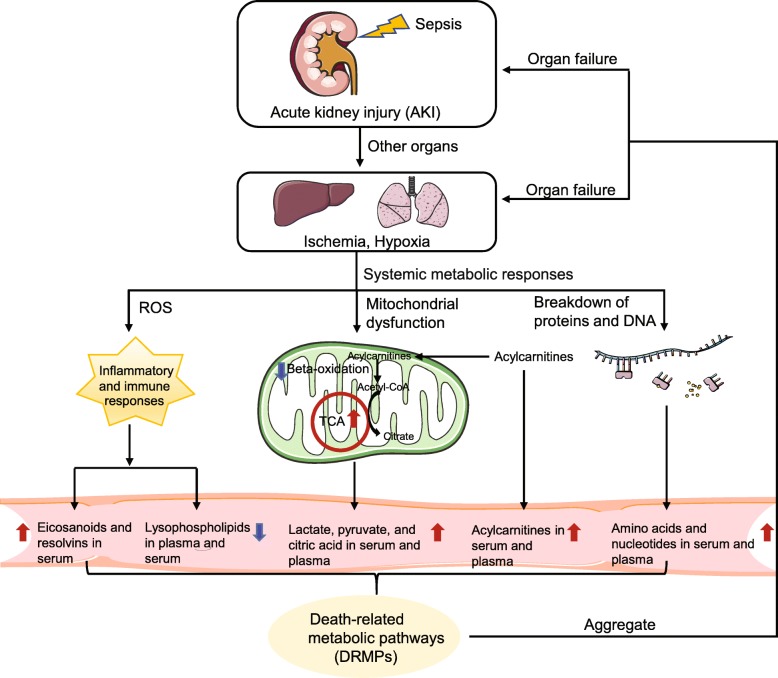Fig. 8.
The death-related metabolic pathways (DRMPs) in the blood of sepsis nonsurvivors. Briefly, sepsis induces acute kidney injury (AKI), followed by ischemia and hypoxia in other organs such as the liver and lung. Acute respiratory distress syndrome (ARDS) in the lung contributes to the subsequent systemic metabolic responses, including inflammatory responses, defects of organ healing capability, mitochondrial dysfunction in energy production, and systemic uncontrolled proteolysis. These produce unique metabolic signatures in the blood of sepsis nonsurvivors, which can be measured by metabolomics. For example, the sharp increase of pro-inflammatory eicosanoids, the accumulation of TCA cycle metabolites (lactate, pyruvate, and citric acid), the increase of acylcarnitines and amino acids, and the significant reduction of lysophospholipids in the plasma and serum of sepsis nonsurvivors. The aggregate of these metabolites in DRMPs leads to multi-organ failure and death. This figure was created by ourselves

